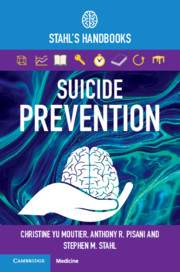Book contents
- Suicide Prevention
- Suicide Prevention
- Copyright page
- Contents
- Acknowledgements
- Section 1 Suicide Prevention Overview
- Section 2 Clinical Risk Assessment and Care
- Section 3 Special Topics: Medicolegal Considerations and Specific Populations
- 11 Medicolegal Risk Management
- 12 The Role of Culture and Societal Factors
- 13 Youth and Adolescents
- 14 Military and Veterans
- 15 Older Adults
- 16 LGBTQ Populations
- 17 Suicide Loss Survivors
- Appendix Resource List
- Index
- References
17 - Suicide Loss Survivors
from Section 3 - Special Topics: Medicolegal Considerations and Specific Populations
Published online by Cambridge University Press: 15 May 2021
- Suicide Prevention
- Suicide Prevention
- Copyright page
- Contents
- Acknowledgements
- Section 1 Suicide Prevention Overview
- Section 2 Clinical Risk Assessment and Care
- Section 3 Special Topics: Medicolegal Considerations and Specific Populations
- 11 Medicolegal Risk Management
- 12 The Role of Culture and Societal Factors
- 13 Youth and Adolescents
- 14 Military and Veterans
- 15 Older Adults
- 16 LGBTQ Populations
- 17 Suicide Loss Survivors
- Appendix Resource List
- Index
- References
Summary
Grief is a universal human experience, and yet is often a topic clinicians and the general public are not well versed in. Grief brings painful yet entirely natural emotions and physical experiences, which people can heal and grow through. So, the role of the mental or primary care health professional is usually supportive, helping patients to process the loss and to heal. In other words, grief is not generally a pathological experience unless particular vulnerabilities are exacerbated.
- Type
- Chapter
- Information
- Suicide PreventionStahl's Handbooks, pp. 261 - 275Publisher: Cambridge University PressPrint publication year: 2021



